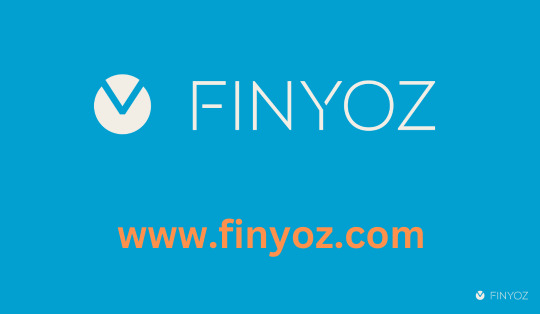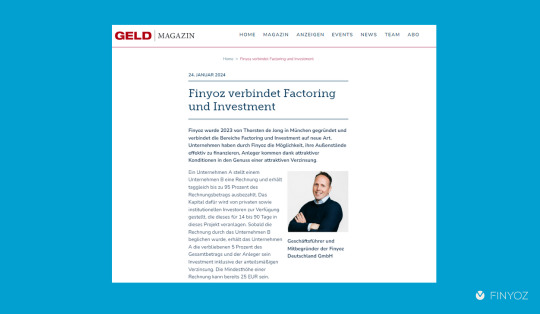#Factoring
Text
Factoring Expressions Ex. 4



Patreon
#studyblr#notes#math#maths#mathblr#math notes#maths notes#algebra#algebra notes#algebra 2#algebra 2 notes#algebra 1#pre-calc#pre-calc notes#precalc#precalc notes#precalculus#precalculus notes#math ex#maths ex#precalc ex#precalculus example#precalc example#factoring#factoring in math#factoring expressions#algebraic expressions
3 notes
·
View notes
Text
Uses of invoice finance are now able to boost their prepayment percentage by accessing the RLS scheme. This can provide both increased pre-payments and an additional business loan.
3 notes
·
View notes
Text


#ordinary photo of yeti#they made astarion in a lab for me to be obsessed with.#like hottest man in game for me is halsin truthfully. astarion is my shitty little white dog with separation anxiety who bites people.#very different things. if i say i'm doing a playthrough as astarion that's when you put me down#main factor motivating me not to is i need to hear neil newbon's voice acting at least once a minute or i die.#i've got a dark urge concept rattling around the brain but i should maybe self-impose a gaming break and take care of. responsibilities 😐
57K notes
·
View notes
Text
There's some dude (derogatory) on FB who is PISSED people are pricing their farm fresh eggs at $2 and $3 a dozen instead of $4+, saying it's "disrespectful" and "undignified" and "I'm trying to feed my kids" like Sir, you are on a Facebook group page bitching about your neighbors egg prices because your pet chickens aren't earning you a living wage and you think it's your neighbors' fault, you do not have a leg to stand on here wrt dignity.
Also half the answers are like "I give them to friends and family free" or "I donate them to food banks" or "I'm making them affordable to folks who might not otherwise be able to get them now that they're so expensive in the store" and "if you think you're going to turn a profit keeping backyard chickens you have been wildly misled" and so on, and so forth, and I'm so living for it.
and I can tell you right now, he did NOT like my answer of "if you're trying to feed your kids, I hear eggs are edible."
#chickens#like buddy you are never going to actually make a profit#and if by some miracle you do#it's going to be VERY SMALL#Considering the money you put into building or buying a coop#plus feed and bedding and equipment (waterers feeders perches etc) costs#egg cartons and enrichment and gas to go get the feed#the cost you (personally) probably put into building the egg stand you mentioned#a 50lbs bag of feed will feed 12 adult chickens for 8 days#12 chickens generally lay 6-12 eggs per day#usually less in the fall and may even stop in winter#a 50lb bag of feed is usually $12-15#and you wasted the first 6 months going eggless until they were old enough to lay#and that doesn't factor in oyster shell or anything else you may need to do for them#like worming or treating for coccidia or anything#and doesn't take into account your time#like asjh;dsfkgdh you really thought you were gonna make a buck doing this???#wank for ts
14K notes
·
View notes
Text
Facts About Factoring That Could Cost You Money
Photo by Mikhail Nilov on Pexels.com
Factoring, a financial transaction where a business sells its accounts receivable to a third party (the factor) at a discount, can be a lifeline for businesses in need of immediate cash flow. However, while factoring can provide crucial short-term financial relief, there are aspects of it that could end up costing your business more money than anticipated.…

View On WordPress
#accounts receivable#business finance#business funding#business growth#cash flow#cash flow management#cost assessment#factoring#factoring benefits#factoring costs#factoring fees#financial decision-making#financial management#financial solution#Financial stability#financial strategy#financial tools#Freight#freight industry#Freight Revenue Consultants#interest rates#Invoice factoring#invoice financing#liquidity#non-recourse factoring#recourse factoring#small carriers#small-business#Transportation#Trucking
0 notes
Text
Revolving Business Lines of Credit: Conquer Cash Flow Challenges

A revolving business line of credit can be a valuable tool for businesses seeking to improve cash flow management. Unlike a fixed-term loan, a revolving line of credit provides access to a pool of funds that can be drawn upon and repaid over time, offering greater control over your business finances.
Feeling overwhelmed by the complexities of business loans? We explain how revolving lines of credit offer a simpler and potentially faster application process compared to traditional options.
The Revolving Business Line of Credit Explained

Refinance
Definition and Key Characteristics
A revolving business line of credit is a type of financing that works similarly to a credit card.
You're approved for a maximum credit limit, which you can borrow from as needed.
Once you've repaid a portion of the borrowed amount, that credit becomes available for you to use again – hence the term "revolving."
Key characteristics of a revolving line of credit include:
- Flexible access to funds: Draw only what you need, when you need it.
- Repayment flexibility: Make payments on your own schedule, as long as you meet the minimum requirements.
- Interest charges: You'll pay interest only on the outstanding balance, not the entire credit limit.
- Renewable credit: As you repay the borrowed amount, that credit becomes available for you to use again.
Advantages Over Traditional Business Loans
While traditional term loans can provide a lump sum of capital, they often come with rigid repayment schedules and stricter qualification criteria.
Revolving lines of credit, on the other hand, offer several advantages:
- Increased financial agility: Access funds quickly to seize opportunities or address unexpected expenses.
- Customizable borrowing: Borrow only what you need, when you need it, reducing the overall interest paid.
- Streamlined approval process: Many lenders have a more straightforward application process for lines of credit compared to term loans.
Of course, like any financing option, revolving lines of credit may come with higher interest rates than some traditional loans.
For businesses that value flexibility and quick access to working capital, the benefits can outweigh the potential drawbacks.
Eligibility and Application Process

Loan Amounts
Creditworthiness and FICO Requirements
Lenders will evaluate your creditworthiness and FICO score to determine your eligibility for a revolving line of credit.
A strong credit history and a high FICO score (typically 680 or above) can increase your chances of approval and secure better terms.
According to FICO, factors that affect your business credit score include:
- Payment history: Your track record of making timely payments on existing debts.
- Credit utilization: The amount of credit you're using compared to your overall credit limits.
- Credit age: The length of your credit history and the age of your oldest account.
- Credit mix: The variety of credit types you have, such as loans, credit cards, and lines of credit.
Documents Required for Application
When applying for a revolving line of credit, be prepared to provide the following documentation:
- Business financial statements: Balance sheets, income statements, and cash flow statements for the past two years.
- Tax returns: Personal and business tax returns for the past two years.
- Bank statements: Recent bank statements showing your business's cash flow.
- Legal documents: Articles of incorporation, business licenses, and any relevant contracts or agreements.
Having these documents organized and up-to-date can help streamline the application process and increase your chances of approval.
Using Your Revolving Line of Credit Effectively

Credit Reporting
Common Business Uses (by Industry)
A revolving line of credit can be a versatile tool for businesses across various industries.
Here are some examples of how different sectors can leverage this financing option:
- Retail: Cover inventory costs, manage seasonal fluctuations, or finance marketing campaigns.
- Manufacturing: Purchase raw materials, cover payroll expenses, or invest in new equipment.
- Service-based businesses: Hire additional staff, fund expansion efforts, or cover operating costs during slow periods.
Over 40% of small businesses use lines of credit for working capital needs, making it one of the most popular financing options.
Responsible Borrowing Practices and Tools
While a revolving line of credit offers flexibility, it's crucial to borrow responsibly and avoid overextending your credit.
Here are some best practices and tools to help you manage your line of credit effectively:
- Create a repayment plan: Develop a strategy for repaying the borrowed amount, factoring in your cash flow projections and upcoming expenses.
- Utilize online budgeting tools: Many lenders offer online platforms and mobile apps to help you track your credit utilization, payments, and remaining balance.
- Set up automatic payments: Avoid late fees and potential damage to your credit score by scheduling automatic payments from your business bank account.
- Monitor your credit utilization: Aim to keep your credit utilization below 30% of your total credit limit to maintain a healthy credit score.
By following these practices, you can enjoy the benefits of a revolving line of credit while minimizing the risks associated with over-borrowing.
Comparing Options and Choosing the Right Lender

Cash Back
Key Factors to Consider
With so many lenders offering revolving lines of credit, compare your options carefully. Here are some key factors to consider:
- Interest rates: Evaluate the annual percentage rate (APR) and any additional fees or charges.
- Credit limits: Ensure the credit limit offered aligns with your business's potential funding needs.
- Repayment terms: Understand the minimum payment requirements and any penalties for late or missed payments.
- Online platform functionality: Look for user-friendly online platforms that offer features like account management, bill pay, and credit monitoring.
By researching and comparing different lenders, you can find the revolving line of credit that best fits your business's unique needs and financial situation.
Consulting with Financial Experts
While a revolving line of credit can be a powerful tool, seek guidance from financial experts to ensure you're making an informed decision.
Consider consulting with a financial advisor or loan officer who can:
- Assess your business's financial health: Evaluate your cash flow, existing debts, and credit history to determine the most suitable financing options.
- Provide personalized recommendations: Offer tailored advice on the type of revolving line of credit, credit limit, and lender based on your specific needs and goals.
- Explain the fine print: Help you understand the terms and conditions, interest rates, and potential fees associated with different lenders and credit products.
By partnering with a trusted financial professional, you can navigate the world of business financing with confidence and make decisions that align with your long-term business objectives.
Alternatives to Revolving Business Lines of Credit

Cash Advance
Explore Other Financing Options
While revolving lines of credit offer unique benefits, they may not be the best fit for every business.
Depending on your specific needs and financial situation, you may want to explore alternative financing options, such as:
- Term loans: Traditional business loans that provide a lump sum of capital with fixed repayment schedules.
- Invoice financing: Borrow against outstanding invoices to improve cash flow while waiting for customer payments.
- Equipment financing: Secure funding specifically for purchasing new equipment or machinery.
- Crowdfunding: Raise capital through online platforms by pitching your business idea to a community of potential investors.
Each financing option comes with its own set of advantages and drawbacks, so it's important to carefully evaluate your business's needs and goals before making a decision.
Revolving Line of Credit vs. Personal Line of Credit
Key Differences and Distinctions
While revolving lines of credit can be used for both business and personal purposes, there are some key differences to be aware of:
- Application process: Business lines of credit typically require more extensive documentation and underwriting compared to personal lines of credit.
- Credit limits: Business lines of credit often have higher credit limits to accommodate larger funding needs.
- Purpose: Business lines of credit are intended for business-related expenses, while personal lines of credit are for personal or household expenses.
- Tax implications: Interest paid on a business line of credit may be tax-deductible, while interest on personal lines of credit is typically not.
According to the U.S. Small Business Administration (SBA), it's essential to keep business and personal finances separate to maintain proper accounting and avoid potential legal issues.
Beyond the Basics: Additional Considerations

business growth
Technological Integration
Many lenders have embraced technology to streamline the application and management process for revolving lines of credit.
Online platforms and mobile apps offer features like:
- Seamless application: Submit your application and required documents securely online.
- Account management: Monitor your credit utilization, make payments, and track your remaining balance.
- Security features: Enjoy enhanced security measures like two-factor authentication and fraud monitoring.
It's crucial to prioritize cybersecurity and follow best practices when utilizing online tools to manage your business finances.
Ethical Considerations and Sustainability
Consider the ethical implications and sustainability of your financing choices.
When evaluating lenders for a revolving line of credit, you may want to research:
- Lending practices: Ensure the lender adheres to fair and transparent lending practices, avoiding predatory or discriminatory behavior.
- Environmental impact: Look for lenders that prioritize sustainability and support environmentally responsible businesses.
- Community involvement: Consider lenders with a strong commitment to community development and small business growth.
By aligning your financing decisions with your ethical values and sustainability goals, you can contribute to a more responsible and equitable business landscape.
Future Trends and Emerging Options

Underwriting Criteria
Anticipating the Future of Business Financing
The world of business financing is constantly evolving, so stay informed about emerging trends and innovations. In the coming years, we may see:
- Increased integration of artificial intelligence (AI) and machine learning: Streamlining the application and underwriting processes, enabling faster and more personalized financing solutions.
- Rise of alternative lending platforms: Online platforms leveraging peer-to-peer lending models or crowdfunding to provide access to capital for businesses.
- Blockchain-based financing solutions: Exploring the potential of blockchain technology to facilitate secure, transparent, and decentralized financing options.
By staying ahead of these trends, you can position your business to take advantage of new and innovative financing solutions as they become available.
Exploring Emerging Alternatives
While revolving lines of credit are a well-established financing option, it's always worth exploring emerging alternatives that may better suit your business's needs. Some potential alternatives to keep an eye on include:
- Revenue-based financing: Accessing capital by sharing a percentage of your business's future revenue with investors.
- Online lending platforms: Leveraging technology to connect businesses with a network of lenders, streamlining the application and funding process.
- Crypto-backed loans: Using cryptocurrencies or other digital assets as collateral for securing business loans.
As with any financing option, conduct thorough research, assess the risks and benefits, and seek guidance from financial experts before pursuing these emerging alternatives.
By leveraging the power of a revolving business line of credit and implementing responsible financial practices, you can position your business for success, seize opportunities, and navigate challenges with confidence.
Real-World Example: How a Revolving Line of Credit Saved a Retail Business
Nadine owns a small boutique clothing store in a trendy urban neighborhood.
During the holiday season, her sales typically skyrocket, but she often struggles to keep up with the increased demand for inventory.
In previous years, she had to turn down potential sales due to stock shortages, missing out on valuable revenue.
This year, however, Nadine took a proactive approach and secured a $50,000 revolving line of credit from her local bank.
As the holiday rush began, she was able to tap into her credit line and purchase additional inventory to meet the surge in customer demand.
Thanks to her revolving line of credit, Nadine not only avoided stock-outs but also capitalized on the seasonal sales spike.
By January, she had repaid a significant portion of her borrowed amount and was able to restock her store with new merchandise for the upcoming spring season.
Nadine's experience highlights the power of a revolving line of credit in providing businesses with the financial agility to seize opportunities and navigate periods of high demand or cash flow constraints.
Good, Better, Best: Tailoring Your Revolving Line of Credit Strategy

Restaurant Industry
Good: Securing a Basic Revolving Line of Credit
Even a basic revolving line of credit can provide valuable financial flexibility for your business.
By meeting the minimum creditworthiness requirements and securing a modest credit limit, you'll have access to working capital when needed, allowing you to:
- Cover unexpected expenses or cash flow gaps.
- Take advantage of supplier discounts or bulk purchasing opportunities.
- Smooth out seasonal fluctuations in your business's cash flow.
Better: Optimizing Your Revolving Line of Credit
To unlock the full potential of a revolving line of credit, consider optimizing your strategy by:
- Negotiating better terms: Leverage your strong creditworthiness and financial history to secure lower interest rates and higher credit limits.
- Integrating online tools: Utilize lender-provided online platforms and mobile apps for seamless account management and credit monitoring.
- Developing a comprehensive repayment plan: Create a detailed plan for repaying borrowed funds, factoring in your business's cash flow projections and upcoming expenses.
By optimizing your revolving line of credit, you can enjoy greater financial flexibility while minimizing the associated costs and risks.
Read the full article
#annualpercentagerate#bankloans#BusinessLoan#Cashadvance#cashback#CreditCard#creditreporting#creditworthiness#factoring#fico#ficoscore#interest#InvoiceFinancing#lenders#linesofcredit#loanamounts#monthlypercentagerate#personallinesofcredit#refinance#revolvingbusinesslineofcredit#underwritingcriteria
0 notes
Photo




www.finyoz.com
1 note
·
View note
Text






< Previous Next >
14K notes
·
View notes
Text
MNS offers in-depth BIR (Business Information Report) that assists factoring companies in evaluating and determining appropriate factoring facility limits for exporters/customers.
0 notes
Text
Fundinvoice have won a third award for their invoice finance quote search service
0 notes
Text
Trade Credit Insurance & Supply Chain Finance: Empowering Financiers
In the dynamic world of finance, one powerful combination that empowers financiers is Trade Credit Insurance and Supply Chain Finance. It’s more than a risk mitigation strategy; it’s an empowerment tool that provides financiers with the confidence to expand their operations, secure favorable financing, and make informed credit decisions while optimizing their supply chain.
Trade Credit Insurance & Supply Chain Finance is the cornerstone of financial stability for financiers. It empowers them to confidently navigate the complexities of the financial landscape, ultimately paving the way for sustained success while ensuring the smooth operation of the supply chain.
Visit: https://www.m1nxt.com/
1 note
·
View note
Text
Running a successful trucking business involves not only managing logistics and deliveries but also navigating the complex financial landscape. This guide will explore the essential aspects of trucking factoring, including non-recourse factoring, to help you make informed decisions and drive the success of your trucking company.
0 notes
Text
The Many Facets of Business Finance
Looking for business finance options? Explore the different types of business finance in this informative article. From debt financing to equity financing, learn about the various funding options for your business. Whether you’re a startup or an established company, understanding the different types of business finance can help you make informed decisions. Read more now!
The Many Facets of…

View On WordPress
#asset management#corporate finance#crowdfunding#factoring#Investment Banking#mergers and acquisitions#private equity#project finance#trade finance
0 notes
Text
We were so close to smoking not being cool anymore. We were so close. Then they flavored it mango and now it's taboo to criticize it anymore. People don't ask if they're allowed to vape indoors, they aren't considerate of people who may have health problems that are triggered by the chemicals or if it just bothers them, people don't care that they're supporting an industry built on corruption and greed, they can't see it draining their pockets and much less their health. We were so close to smoking not being cool anymore.
#i hate hate HATE nicotine after watching my parents smoke when i grew up#its gross and bad for your money and bad for your health#and i get it. theres SO MANY socioeconomic factors that make it a complicated issue.#you CANT blame smokers.#but it feels like people are just accepting the institution for what it is bc now it tastes good#bitch just chew gum jfc#it doesn't matter if its an industry issue. we have seen in the past that making it “uncool” hurts the industry#make nicotine uncool again PLEASE#grumbles
6K notes
·
View notes
Photo




www.finyoz.com
#factoring investing companies germany austria make money online interest#factoring#investing#companies#germany#austria#make money online#interest
1 note
·
View note
Text






< Previous
13K notes
·
View notes